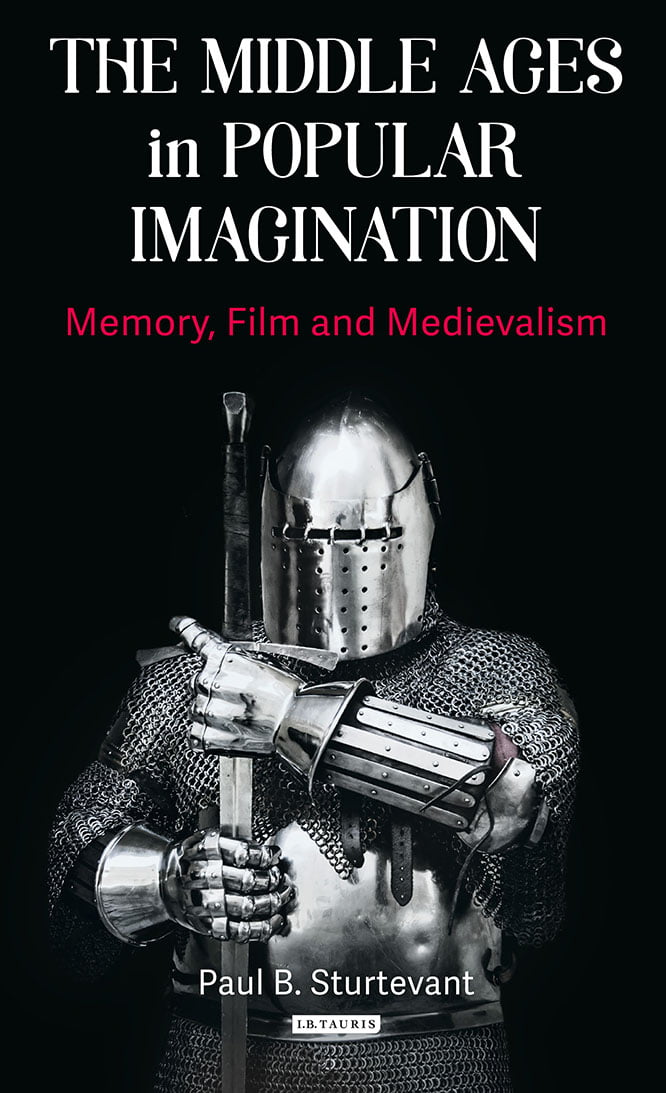 Read more about film and popular perceptions of the medieval past in Paul’s new book, The Middle Ages in Popular Imagination: Memory, Film and Medievalism! As a special for readers of The Public Medievalist, if you order your copy from I.B. Tauris Publishers, use the coupon code MIDDLE30 and receive 30% off the hardback price! It is also available as an e-book on Amazon and Google Play.
Read more about film and popular perceptions of the medieval past in Paul’s new book, The Middle Ages in Popular Imagination: Memory, Film and Medievalism! As a special for readers of The Public Medievalist, if you order your copy from I.B. Tauris Publishers, use the coupon code MIDDLE30 and receive 30% off the hardback price! It is also available as an e-book on Amazon and Google Play.
Whenever I ask people—academics and non-academics alike—what they think the public knows about history, the answer almost always comes back the same: “NOTHING!”
There’s a snobby cynicism that lies at the heart of that answer—that without academic training, we are all just dunderheaded simpletons stumbling through the world. This idea has been cultivated and exploited by journalists and politicians over and over again. To take just one example, in 2013, Education Secretary of the United Kingdom Michael Gove went on a tear about the state of the education system in his country:
Survey after survey has revealed disturbing historical ignorance, with one teenager in five believing Winston Churchill was a fictional character while 58 per cent think Sherlock Holmes was real.
“Survey after survey?” One teacher made an official request to know what these surveys were. The official answer from the Department of Education cited marketing surveys conducted by a UK cable TV channel (UKTV Gold) and a hotel chain (Premier Inn) where individuals were given pop-quizzes about historical facts. Gove then used the results of these marketing exercises to bash the UK education system and call for reform.
This isn’t the first time people have used sloppy methodology to make a point. Many of these surveys use research tools that would make a sociologist cringe, and all of them are biased. They intend to trap participants into getting wrong answers so that they can present the results as a “shocking” display of public ignorance.
Take, as an example, this survey, conducted by the BBC in 2004:
Q1 Which one of the following conquered Britain?
- a) Germans; b) Spanish; c) Romans; d) Americans; e) Don’t know
Q2 Who won the Battle of Hastings?
- a) Napoleon; b) Wellington; c) Alexander the Great; d) William the Conqueror; e) Don’t know
Q3 Which of the following fought men [sic] in the English fleet against the Spanish Armada?
- a) Horatio Hornblower; b) Christopher Columbus; c) Francis Drake; d) Gandalf; e) Don’t know
Q4 Which famous battle is marked every year on July 12 by the Orangemen in Northern Ireland?
- a) Boyne; b) Stamford Bridge; c) Bulge; d) Helmsdeep [sic]; e) Don’t know
Q5 During which war did the Battle of Britain take place?
- a) Hundred Years War; b) First World War; c) Second World War; d) Cold War; e) Don’t know
How many did you know? How many of you were tempted to choose “Gandalf” for 3, and “Helmsdeep” for 4, just because you’re a Tolkien fan? (I know I would have been.)
Despite being a marketing exercise explicitly intended to sell their Battlefield Britain TV series, the news media took this as evidence of shockingly widespread ignorance. The BBC presented their results in breathless tones:
Almost half of 16 to 34-year-olds questioned didn’t know Sir Francis Drake fought in the battle against the Spanish Armada […] One in five 16 to 24-year-olds said it was the explorer and discoverer of America, Christopher Columbus. Horatio Hornblower, the fictional commander in the CS Forester books, was the answer from one in five 25 to 34 year olds. And Gandalf, the wizard from The Lord of the Rings, was the choice of more than one in twenty 16 to 24-year-olds.
An article in The Guardian used it to bang the drum for a return to “traditional” history education. In an article reporting on the survey (entitled “Gandalf finds a place in British history”), they interviewed Nick Seaton, chairman of the Campaign for Real Education, who said:
“It clearly shows that our state education system has got a lot to answer for. A grounding in national history is essential for all young people in order to understand the present. This is extremely shocking.”

The problem is that, at their core, these surveys assume understanding history is fundamentally about memorizing historical facts. If you don’t know those specific facts (almost always about supposedly “Great Men” or supposedly important battles, like in the BBC survey above), then clearly there was something wrong with your education, and thus, something wrong with you.
But history is about so much more than the rote memorization of names and dates. It is about how we understand ourselves as people. It is about learning to appreciate the differences and similarities of cultures different to our own, learning how all cultures change over time, and learning to see ourselves in people from other times and places. And it is so much more.
How can a survey study all of that?
That is exactly the topic of my new book, The Middle Ages in Popular Imagination. The study at the center of the book is fundamentally about how people use film as a way of learning about and engaging with the medieval past. Instead of using surveys that can only scratch the surface of what it means to learn history, I talked to people and really listened to the answers. I wanted to find out how people understand, learn about, and use the past in their daily lives. And I wanted to find real answers instead of just confirming my own preconceptions.
With Apologies to Mr. Bloom…

To give you a taste of the results, let’s look at the case of Orlando Bloom.
I showed four groups of students—recruited from across the University of Leeds campus—three medieval films each, and interviewed them before and after viewing the movies to see how film influenced their ideas about the Middle Ages. Two of those three films, coincidentally, starred Orlando Bloom: in Kingdom of Heaven he stars as Balian, a blacksmith who goes on Crusade and ultimately leads the Kingdom of Jerusalem in its final clash with Saladin. And in The Return of the King, of course, he plays Legolas.
To say that the participants disliked Bloom in Kingdom of Heaven is a bit of an understatement.
First of all, students did not feel that the plot of the film, with its rags-to-riches narrative, was at all realistic in a medieval context. But students also rejected Orlando Bloom’s masculinity. They complained that he did not match their expectations of heroic medieval men. One participant said:
Orlando Bloom is known as a celebrity and a bit of a dish […] a little bit too glossy […] you see Orlando Bloom and you make a snap decision that he’s a pretty boy.
Other participants in the groups reiterated this discomfort: “[he] just seemed a bit… wimpy,” or “he doesn’t have the voice for it, he doesn’t have the gravitas for it,” or, “[he] didn’t seem to have the power behind him to suggest that he could lead people.” When they were asked who might be a better medieval hero, several pointed to Liam Neeson (who plays Balian’s father in the film). He, they said, had the age, the gravitas, and the power to be truly medieval.
The fact that several individuals across the groups flagged Bloom’s masculinity as “anachronistic” lends credence to the idea that this was not only one person’s perception. Rather, it points to a wider cultural perception of medieval masculinity. These students expected medieval heroes to be butch and aggressive, first into the fray. Leadership ability was signaled by a deep voice and the impalpable quality of “gravitas.” And perhaps most telling, their use of the word “dish,” “glossy” and the phrase “pretty boy” imply that Bloom’s youthful features makes him attractive to the wrong sort of people: young women and gay men. To them, Bloom was more boy-band than battlefield.
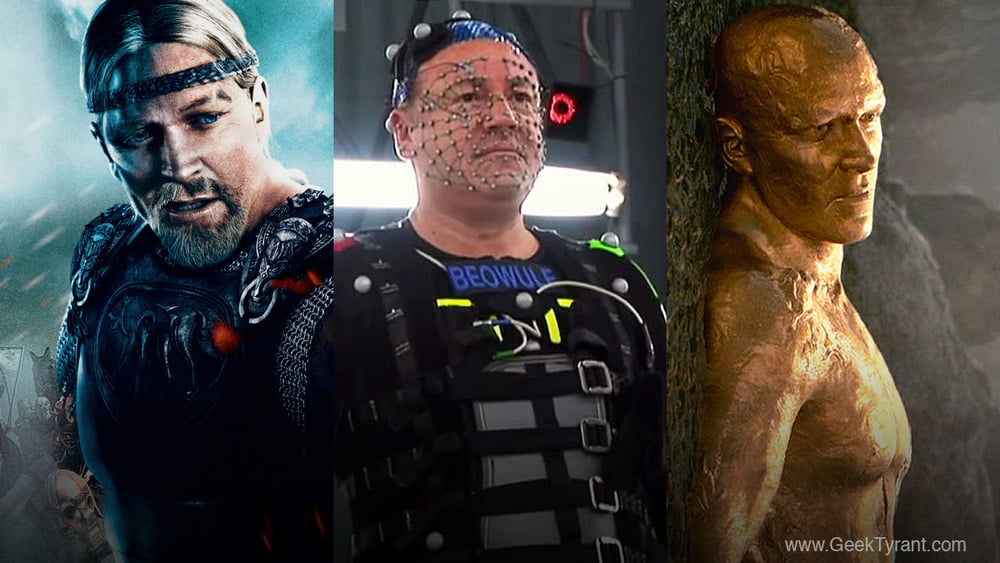
By contrast, I also subjected participants in my study to the 2007 CGI version of Beowulf. Beowulf was played by Ray Winstone, who himself does not have a body type typically associated with Old Norse heroes. But, thanks to the magic of CGI, the filmmakers digitally stitched Ray Winstone’s voice and performance onto two other bodies—those of actor Alan Ritchson and fitness model (and alleged #metoo scumbag) Aaron Stephens.

In effect, they digitally Frankensteined a “perfect” medieval hero out of a voice, a face, and a body that they chose.
And despite the high-tech, artificial nature of Beowulf’s medieval masculinity, participants had none of the same negative reactions to his character that they did to Orlando Bloom’s Balian. The stitches were invisible, but the expectations of authentic medieval masculinity were as plain as day.
https://www.youtube.com/watch?v=nRnBXAPFgfQ
A High-tech Middle Ages
Despite their acceptance of Winstone/Ritchson/Stephens’s medieval masculinity, study participants had other problems with the movie Beowulf. For instance, everyone is filmed in motion-capture, and every object, stitch of clothing, and piece of scenery is rendered by a computer. Beowulf wasn’t even filmed (if you can even call it that) using traditional cameras; dozens of infrared sensors bounced light off the actors and reconstructed them as wireframes in computers.
For filmmakers into tech, it’s very cool. But for the viewers of these groups, it was creepy as hell.
Participants thought the movie felt like a video game (it does), and that characters fell into the Uncanny Valley (they do). Several also contrasted this specifically against a familiar medieval aesthetic. For example, one participant noted:
Whenever I think of medieval, I always think of Robin Hood and crappy, really crappy effects. And, I don’t know, that kind of vibe about it makes it seem more medieval. Whereas if it’s computer generated and all sparkly and polished, it’s too new.
Another then added, “It’s not a very sparkly and polished time, is it?” Interestingly, co-writer on the film Roger Avary agreed with them, writing: “It was a strange way to be making a film that should be dirty and muddy.”
Again, this has nothing to do with the actual Middle Ages. Travel to the countryside or even a park after a rainstorm and you’ll see just how muddy and dirty our contemporary world can be. Instead, this idea comes from a combination of our perception of medieval people as being filthy and plague-ridden, exacerbated by some of the most successful films and TV shows set in the Middle Ages. Monty Python and the Quest for the Holy Grail is a classic of both the muddy and the aggressively badly-made (but wonderful) Middle Ages.
Beowulf didn’t have that “medieval” feel. That’s not because Beowulf was set in a pristine, gleaming version of the Middle Ages—Beowulf gets plenty dirty. But the fact that the mud is not real (and that, in fact, nothing in the film really is) makes it unsatisfying, unsatisfactory. The CGI, while enabling the filmmakers to do whatever they wanted, became an interfering layer for an audience hungry for a more low-budget, “authentic” medieval experience.
Medieval Orcs and Elves

On their final meeting, each group viewed The Lord of the Rings: The Return of the King. I wondered whether they would see this film as “medieval.” Obviously, a fantasy like The Lord of the Rings isn’t “medieval” if you think of that word only in reference to a period of real history. But Tolkien was drawing on medieval mythologies, social structures, technologies and aesthetics when he wrote The Lord of the Rings, and the filmmakers followed suit. Would the average viewer pick up on that?
As it turns out, there was disagreement on that point. Some felt that because Return of the King depicted a fantasy world, comparing it to actual history was ludicrous: “It’s too much of a fantasy to learn anything historical about medieval times from it.”
Others took the opposite tack, with one saying that it “probably depicted medieval England better than Beowulf did.” Importantly, he added, “I don’t know if it did, but in my mind it seemed to gel.”
The most interesting part, to me, is the way the second participant talked about it—speaking from the level of intuition and inductive reasoning rather than as a simple recollection of facts. Many of the participants talked this way—with hesitation and groping for their answers—because these were subjects that they had learned long ago and by consuming popular culture.
But that was not the same as not knowing anything. My study showed me that these students knew quite a lot about the medieval past, but that they did not have much confidence in their knowledge. The participants had fairly wide-ranging knowledge, and a remarkable amount of expertise in particular subjects that they were interested in. For example, one participant was very knowledgeable and interested in medieval social dynamics and material culture as a result of her being a fan of historical novels. Similarly, several others were well-versed in the technology of medieval warfare as a result of being connoisseurs of medieval war games. Moreover, most participants were fully aware of the gaps in their understanding, and aware that some of the things they did know were derived from sources—like films and other popular culture—which are not to be trusted.
That could be seen in the way that others talked about Return of the King. Though many did not label the film “medieval,” they were more than happy to compare it with the other, genuinely-medieval, films they had seen (as well as their experience with the Middle Ages in other pieces of pop culture). The battle of Pellenor Fields, for example, was cited as an excellent example of a medieval battle, and the quest for the ring was productively compared to a crusade. So while Middle Earth is not the Middle Ages, in many ways it was very, very medieval indeed.
You Know More than You Think
Despite what the newspapers tell you, everyday people know a lot about the Middle Ages. Yes, many people harbor incorrect ideas about the Middle Ages, but those frequently have nothing to do with an inability to remember dates and names of famous men or battles. Instead, misconceptions came from incorrectly applying knowledge too broadly.
Sometimes scholars pick on people for making grand pronouncements that the medieval world was an objectively terrible place, or projecting their understanding of the world today backward onto the Middle Ages. This certainly happened during my study—for example, several participants assumed that the Crusades played out similarly to the war in Iraq, and assumed that the conflicts that exist today in that region must have been the same in the Middle Ages.
These mistakes are a natural part of how our minds fill in gaps in our knowledge—not just of history, but any subject. But identifying and complicating these mistaken assumptions is an essential part of the learning process. Because, as we have sought to explore here on The Public Medievalist, medieval people were more like us in some ways than we might like to admit. But in other ways, they, and the world they inhabited, were fundamentally different from ours. The trick is in learning which is which.
But that is a far cry from not knowing anything at all. So, the next time someone tries to tell you that people know nothing about the past, you have my permission to tell them to stick it in their ear.
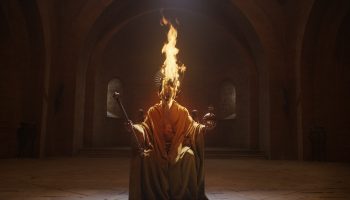
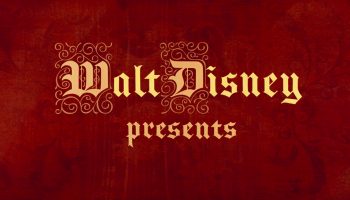
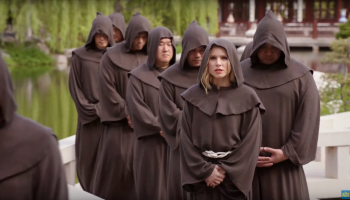
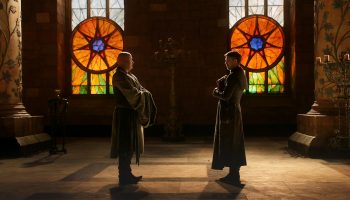

Obviously you couldn’t show your students every medieval movie ever made, and they might have groaned if you went back this far, but I’d love to know what they would have thought of “The Lion in Winter.” The first time I saw the scene where Peter O’Toole is walking through the mud and the chickens to embrace Timothy Dalton, I thought, “That’s real!” It’s a shame abs have become a requirement for authenticity–O’Toole, who was rather scrawny IRL, was certainly capable of being downright feral.